Issac Christiancy was a white-bearded 79-year-old when the shooting over nitrogen started.
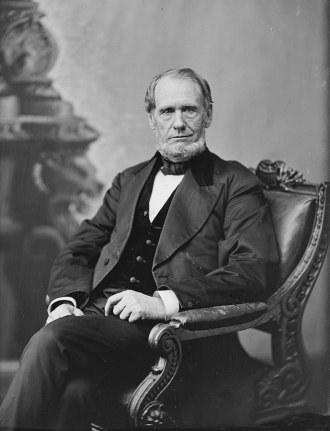
Isaac Christiancy Mathew Brady/Library of Congress
It was January 15, 1881, and the U.S. envoy to Peru had to duck for cover. Bullets whizzed through a suburb of Lima, “pattering thick and fast upon the buildings around us,” he later wrote back to Washington, D.C. Christiancy fled, throwing himself over walls and wading through ditches over an eight-mile run as shells from Chilean gunboats exploded around him, until he stumbled into his offices. Peru soon surrendered, and the night that followed was “a nightmare of chaos and unutterable horrors” as the remnants of the defeated Peruvian army looted, burned, and terrorized the city.
Chile had invaded Peru for a seemingly unlikely prize: nitrogen fertilizer. Twenty years earlier, the great European powers and the United States had come to the brink of global war over three tiny islands off the coast of Peru covered in mountains of nitrogen-rich guano. Why would anyone come to blows over piles of bird crap? Because nitrogen gave these countries the power to feed their growing populations. Peruvian guano was, as one historian put it, “worth more than all the gold shipped back to Europe in the Spanish treasure galleons.”
Nitrogen is everywhere. It makes up 80 percent of the air you’re breathing. On its own, it has no real value. But if it’s combined into a molecule with another element, like hydrogen or oxygen, it becomes something that can react with other chemicals. In this “fixed” state, plants can use it to build proteins. Our bodies use those proteins, in turn, to build muscles, bones, DNA, and babies.
But back in the 19th century, fixed nitrogen was limited. In the early 1800s, the English scholar Thomas Malthus warned of famine as population growth began to overtake farm production. Then settlers discovered the guano islands and nitrate mines of South America, and fertilizer-laden clipper ships streamed around Cape Horn back to Europe, giving farmers bumper crops and feeding a baby boom.
Britain’s population quadrupled over the next 100 years. Then in 1908, as South American nitrogen was beginning to run low, the chemist Fritz Haber discovered a way to take the inert nitrogen in air and turn it into the reactive forms plants and animals use. “Haber opened the faucet for nitrogen to flow from the air to the living world,” wrote geographer Ruth DeFries. Instead of waning, populations continued to boom.
This breakthrough solution created a crisis as large as the one it solved. Since Haber’s discovery, humans have nearly doubled Earth’s natural flow of fixed nitrogen, overwhelming the capacity of ecosystems to remove it. The resulting buildup is poisoning the planet’s waterways, creating a crisis some consider even more threatening than the buildup of carbon dioxide in the atmosphere.
But we can’t simply turn off the spigot of industrial nitrogen, because we depend on it. More than 3 billion people wouldn’t be alive today without Haber’s industrial process.
Now, for the first time in over a hundred years, there’s a potential solution. A pack of startups is racing to market with a means of fixing nitrogen without polluting the Earth. One of them, Pivot Bio, just garnered a $70 million vote of confidence in a funding round led by Breakthrough Energy Ventures, the coalition of big-name billionaires — Bill Gates, Jeff Bezos, Michael Bloomberg, Richard Branson — hoping to power climate change-beating innovation.
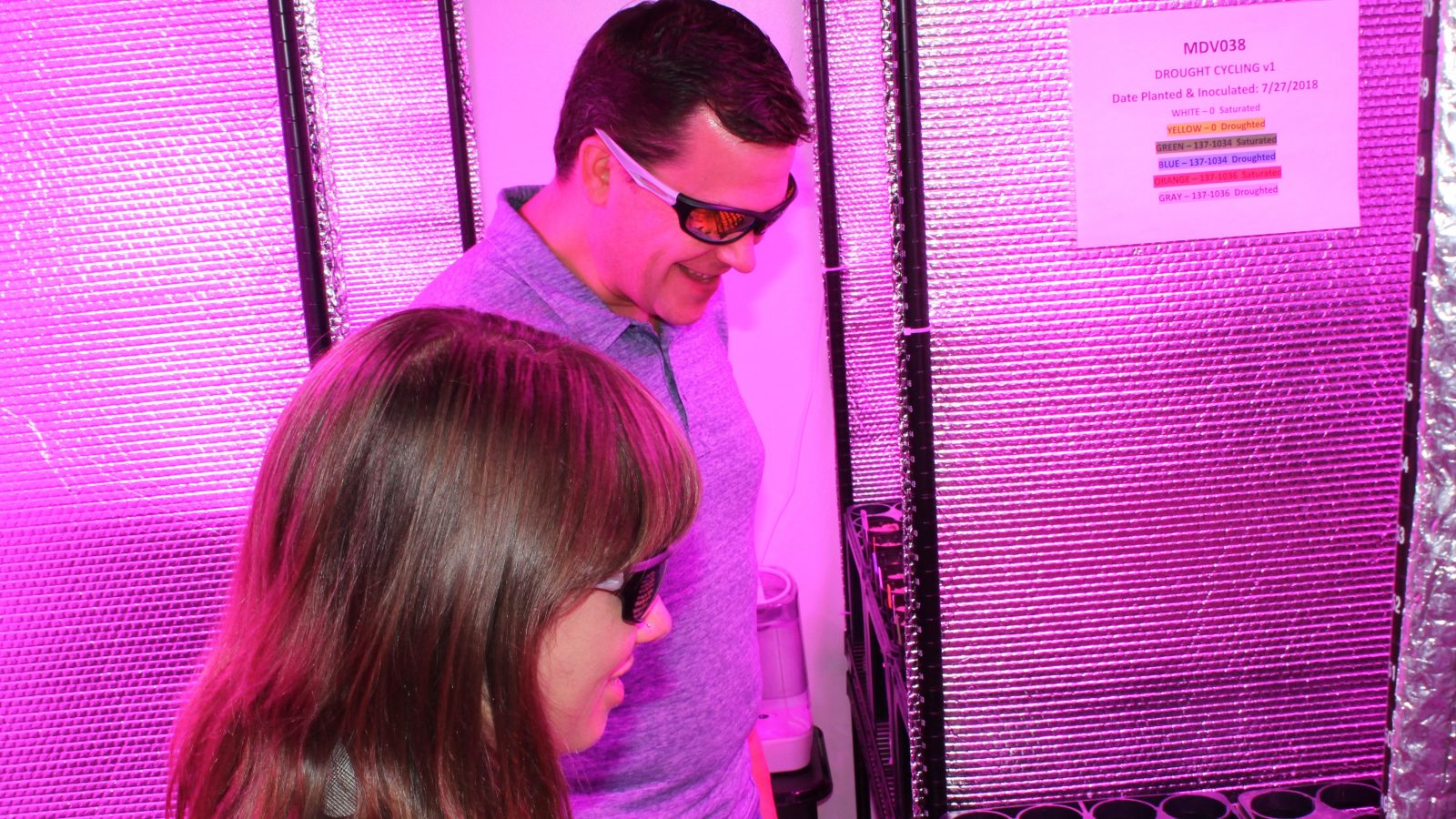
Pivot Bio CEO Karsten Temme and senior scientist Sarah Bloch in a grow room where bright lights make sunglasses necessary. Nathanael Johnson
“Pivot Bio is addressing one of the largest sources of GHGs on the planet,” said Carmichael Roberts, a Breakthrough investor, in a press release. He noted that the Berkeley, California-based biotech might earn a fortune by “disrupting the $200 billion fertilizer market.”
Next year, Pivot plans to start getting farmers nitrogen-fixing bacteria — which efficiently delivers fertilizer to crops, no fossil fuels required. Farmers will spritz seeds with a liquid probiotic as they bury them in the ground. Two other startups, Azotic Technologies based in England, and Intrinsyx Bio, in Silicon Valley, are racing to bring other bacteria to market around the same time. And at least one other, the Bayer-backed Joyn Bio, is just ramping up. If any of them is able to provide a viable alternative to the international fertilizer industry, it could be the most significant environmental breakthrough since Haber figured out a way to synthetically release nitrogen from its natural bonds.
Seemingly every startup — even CryptoKitties selling cartoon cats — likes to say it’s creating “technology that will change the world.” But for the companies racing to fix nitrogen, it’s no stretch. If this solution proves out, it would clean up the pollution choking the planet’s life support systems, without forcing widespread famine and a return to the nitrogen wars.
Earth is marinating in the flood of nitrogen Haber uncorked. Start with so-called “dead zones.” Less than half of the nitrogen that farmers spread makes it into food. The excess washes out of fields with other fertilizers and winds up in rivers, lakes, and bays where it catalyzes algal blooms. The bacteria that eat this algal slime suck the oxygen out of the water, killing every animal that can’t flee, and creating huge areas covered in slime and suffocated of oxygen and light. There are now more than 400 of these dead zones around the world (and algae problems in Florida recently barged into the U.S. Senate race), covering an area the size of Oregon. In the dead zone at the mouth of the Mississippi River, an estimated 235,000 tons of fish and other sea creatures perish each year.
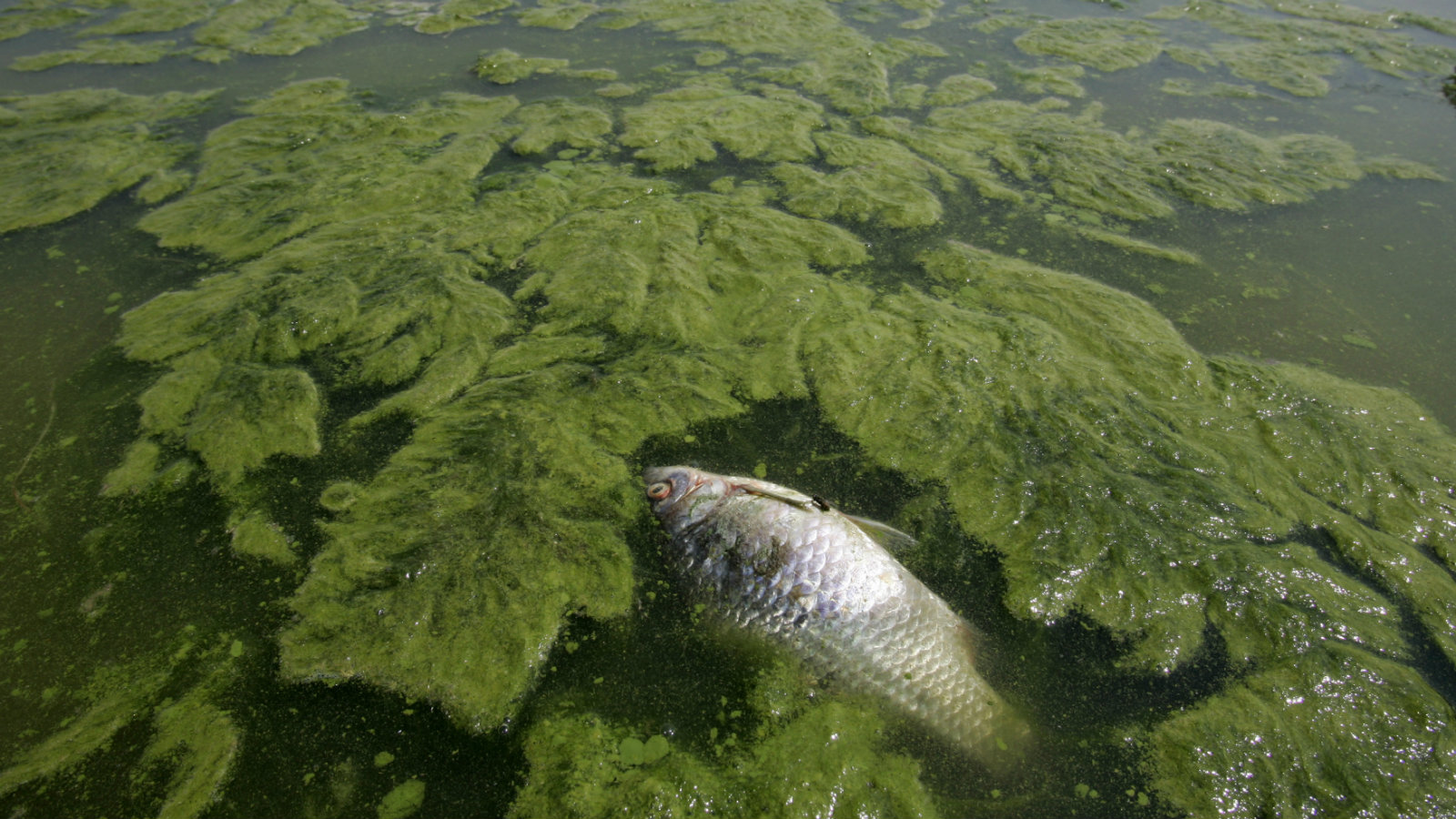
Algal bloom in Dianchi Lake, Yunnan, China. Nitrogen use is particularly heavy in Asia. Jie Zhao / Corbis via Getty Images
Wherever they gather, nitrogen compounds turn poisonous. In drinking water, they cause blue baby syndrome, which prevents infants from absorbing oxygen; in lakes, they fertilize neurotoxic algae; in farm country, they are a major source of suffocating smog.
Then there’s the climate. Some of the nitrogen seeps out of the ground as nitrous oxide (yep, laughing gas), which turns out to be a greenhouse gas 300 times as potent as carbon dioxide. Manufacturing nitrogen fertilizer sucks up 1 percent of all the energy humanity harnesses, more than all the wind and solar energy produced worldwide last year, and produces as much greenhouse gas as all the homes in the United States.
The world’s largest factory for fixing nitrogen sits alongside the west bank of the Mississippi River in Louisiana, an hour’s drive from New Orleans. The CF Industries Donaldson Nitrogen Complex contains 1,400 acres of concrete tanks and steel gridwork with twisting pipes that lead to a series of chambers where gas and air are brought together at up to 1,800 degrees Fahrenheit, creating a pressure cooker that could squish a human body like a grape. That’s what it takes to turn nitrogen from the air into fertilizer.
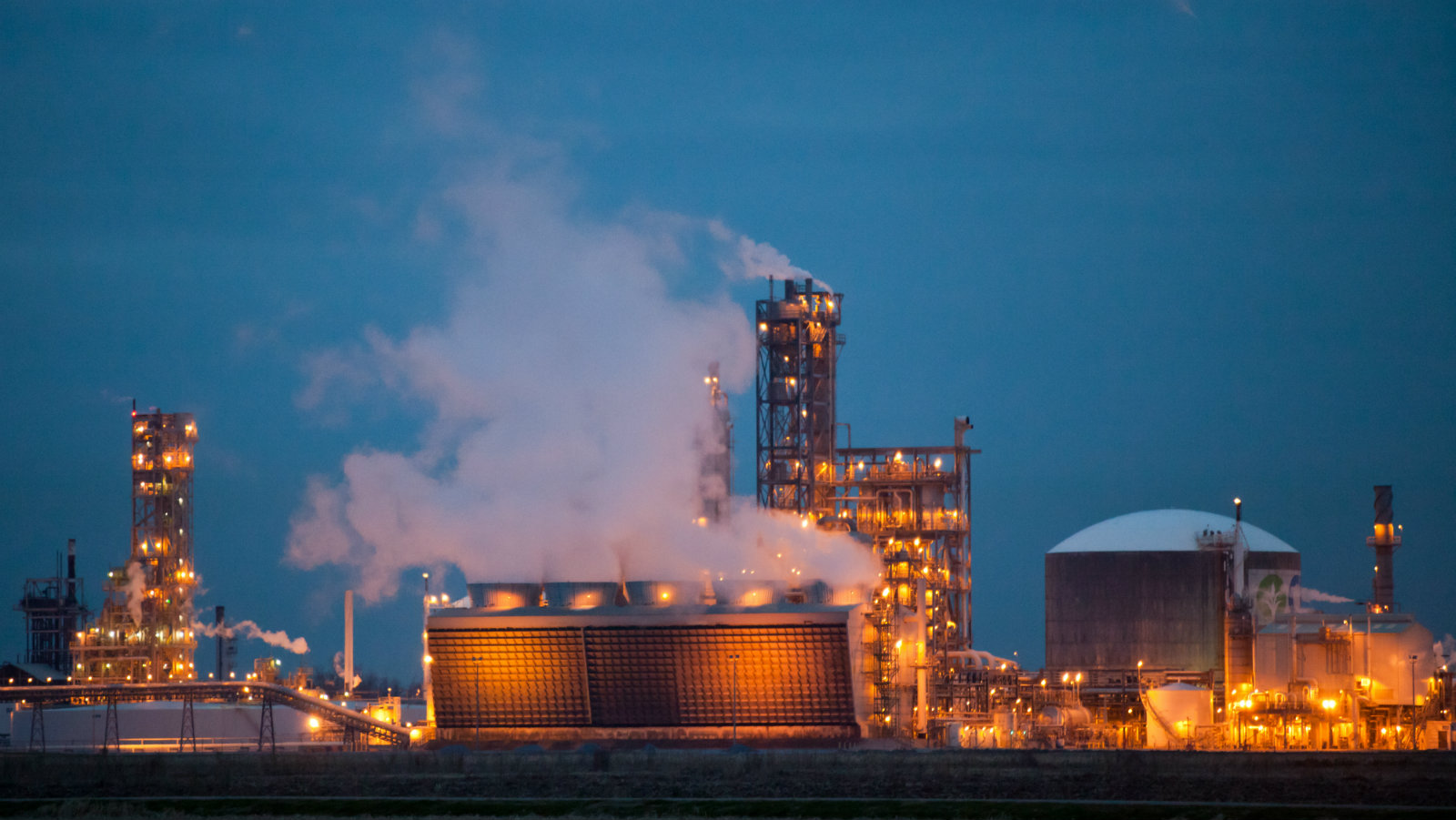
The frame of this picture can only take in a small part of the CF Industries nitrogen complex in Donaldson, Louisiana Julie Dermansky / Corbis via Getty Images
At least, that’s how humans do it. Bacteria accomplish this same feat of engineering within the fragile wall of a single cell. They offer a microscopic solution for this enormous problem.
“There’s a simple elegance and beauty in the way these microbes activate nitrogen,” said Karsten Temme, Pivot Bio’s CEO.
Instead of fossil fuel, these bacteria run on sugar, which they get from plants in exchange for nitrogen. And they produce fertilizer exactly when and where plants need it: Pivot’s bacteria coat roots “like a glove,” Temme said, feeding them tiny squirts of nitrogen as they grow. That’s much more precise than spreading synthetic nitrogen, or organic guano, or liquid manure pumped from a holding tank under a hog barn. In short, turning to bacteria for fertilizer holds the potential to stem pollution without famine, food rationing, or more wars over nitrogen.
Temme was a graduate student at the University of California, Berkeley when he became entranced with the ability of bacteria to fix nitrogen. He started working with another student named Alvin Tamsir — first helping each other in the lab, then having mind-melding conversations outside its confines. They decided to start a company that would genetically engineer plants to produce their own fertilizer, thus solving the nitrogen crisis. It was ridiculously audacious, but at the time — as lifelong students about to graduate — every other career option seemed just as daunting, Temme said. Their professors were behind them, the Bill and Melinda Gates Foundation gave them the money to get on their feet, and they won a spot in a University of California, San Francisco startup incubator.
Pivot officially started in November 2011, and for the next two years Temme and Tamsir tried and failed to accomplish what scientists had been attempting to do since the 1970s — pluck the genetic instructions for nitrogen fixation out of bacteria and into crops. But each attempt failed. Researchers have learned that the problem contains maddening layers of complexity.
Temme and Tamsir were running out of money, and they were nowhere close to producing a plant that could fertilize itself. Meanwhile, debates over genetic engineering were raging. Even if they somehow succeeded, they’d need buckets of money to get through years of regulatory review, and even then the public might fear and reject the GMO plants. By mid-2013, it seemed hopeless. “We were in a tough spot,” Temme said.
On a gray day, Temme and Tamsir, both feeling defeated, laid down their pipettes and left their lab in search of coffee.
To comprehend what happened on that coffee break, you have to understand a revolution in scientific thinking that was underway. Fortunately for Temme and Tamsir, scientific progress had just opened the way for them to take a new direction.
The old dogma was that — aside from Haber’s industrial process — the only way people could fix nitrogen was to grow fields of legumes, like peas, beans, alfalfa, or clover. That’s because legumes have these strange grape-like clusters on their roots called root nodules, which provide a home for rhizobia, a class of nitrogen-fixing bacteria.
Sharon Doty, a professor of environmental and forest science at the University of Washington, upended this dogma. Back in 2001, Doty was in postdoctoral program at the school and wanted to take a close look at poplar trees, starting with growing a few poplar cells in petri dishes. But no matter how much she scrubbed the poplar sprigs she brought into the lab, no matter how long she soaked them in bleach, she’d wind up growing brown ooze all over her poplar cell cultures.
In exasperation, she analyzed the slime’s DNA. “To be honest, I wanted to identify it so I could figure out how to kill it,” she said. To her surprise, the DNA revealed that the slime was a species of rhizobia.
“What are rhizobia doing inside these trees?” Doty marveled.
The thing is, poplars don’t have root nodules. The bacteria Doty found were living throughout the trees, in the spaces between the cells, moving from the leaves to the roots and back again. Its presence made sense: Her poplar trees were growing in the rocky shoals of the Snoqualmie River in Washington state. Where were they getting their nitrogen? Certainly not from the rocks or the water, which was pure alpine snowmelt. It was only logical that the poplars — and maybe lots of other plants — had partnered with nitrogen-fixing bacteria in a manner previously unknown to science.
When Doty wrote up a paper describing her discovery, her peers were skeptical. Scientific journals rejected her work for three years — believing nitrogen fixation was limited to root nodules — until it was finally published in 2005. “I wanted to tell these reviewers, ‘Just go outside,” she recalled. “‘You find plants in sand bars, in land scraped bare by glaciers, in lava flows. You can see these things! Where do you think they get their nitrogen?’”
Doty would soon be vindicated. In the next decade, the tools that allow us to read DNA improved dramatically, revealing tiny worlds previously invisible to scientists. As a result, scientists began to realize that there were hundreds, maybe thousands, of microbes that had evolved to fix nitrogen for plants.
Doty’s discovery, along with many others (in science it’s never just one person), set the stage for the epiphany Temme and Tamsir had as they were walking, dejectedly, with their coffees eight years after Doty published her research. The pair admitted to each other that they were failing: It was just too hard to train plants to fix their own nitrogen. But what if they tried something simpler? Instead of engineering plants, what if they worked with nitrogen-fixing soil bacteria? Farmers could plant a liquid probiotic along with their seeds, allowing the nitrogen-fixing bacteria to grow with the plants. “The solution was there all along, beneath our feet in the roots of every plant,” Temme said.
The two returned to their lab filled with new hope. It might have been among the most mood-altering coffee breaks in scientific history. Pivot pivoted. The company began prospecting for bacteria in buckets of soil from farms all over the United States and uncovered hundreds more nitrogen-fixing critters.
Other companies wound up on similar paths. Azotic Technologies started working with a bacterium found in sugarcane, while Intrinsyx Bio, based in Silicon Valley, began testing the bacteria Doty had discovered.
“The science is ready,” Doty said. “A lot of ag companies are pushing hard. I think we are at the point where we are ready for these products.”
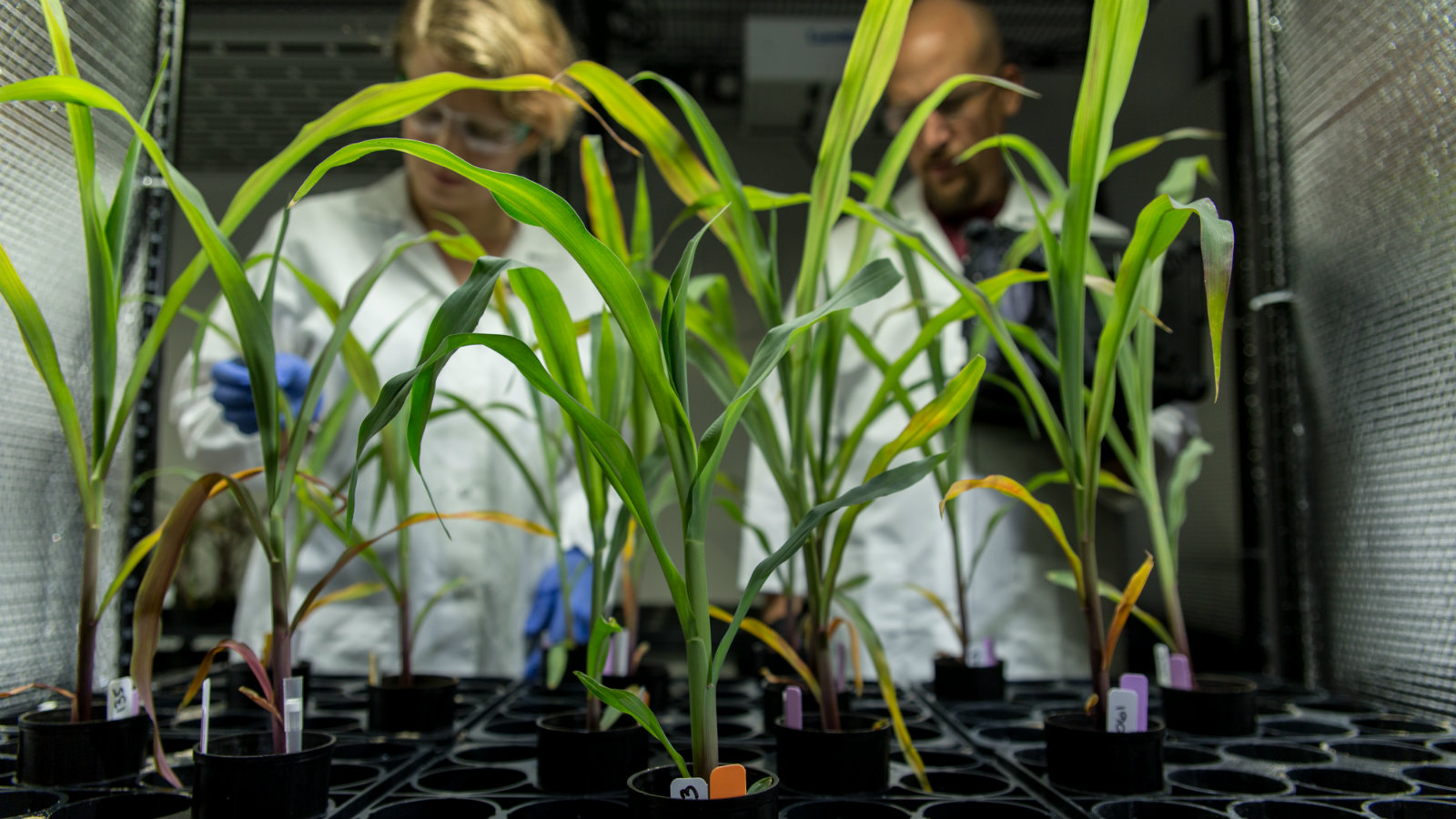
Pivot Bio scientists check on corn plants growing in the company’s lab. Microbe colonization along the plants roots are checked at different stages. Pivot Bio
After six months working on bacteria, Pivot Bio had something: A small seedling in a test tube, growing heartily on nitrogen supplied by bacteria. It was just a start, but this proof of concept was enough to raise millions of dollars in venture capital.
You can see the ripples of the nitrogen-fixing bacteria boom in an unremarkable office park in West Sacramento. The pharmaceutical and chemical giant Bayer built a 160,000 square-foot campus here in 2013 and devoted the space to creating a future where bacteria largely replace chemicals in farming. It’s hard for multinational conglomerates to move like nimble startups — so the company set aside nearly $700 million to fund moonshot startups. One of these, Joyn, launched last year and has already raised $100 million. (Pivot Bio has raised $87 million, Azotic has kept mum about its funding, while Intrinsyx Bio hasn’t started raising money.)
That giants like Bayer are trying to solve the nitrogen problem ups the odds that someone will succeed, because it’s not enough to simply identify a nitrogen-fixing bacterium. The startups also must master the art of marketing to farmers and the logistics of keeping a living organism perky while distributing. To knock out synthetic nitrogen, they’ll have to fit seamlessly into modern agriculture.
For four years, Pivot Bio has been testing its bacteria with farmers across the country. Every few months, buckets of dirt and baggies of corn roots arrive in the mail for the scientists at Pivot to examine.
The company doesn’t expect to replace all nitrogen fertilizer — not yet. But Pivot thinks it can replace one pass of a tractor (up and down the fields to apply fertilizer), decreasing the amount of time, equipment, and nitrogen that farmers must dedicate to each field.
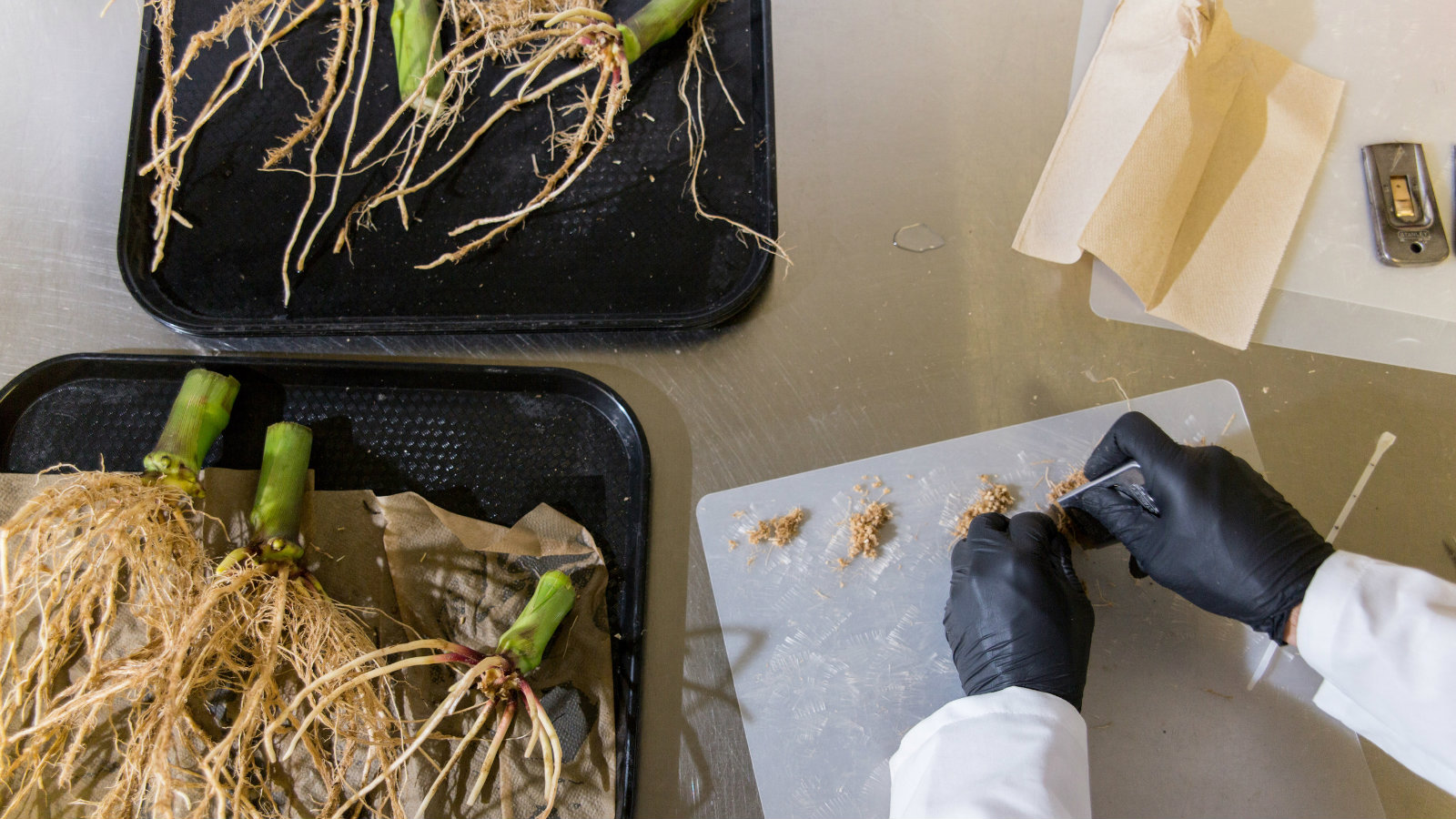
Pivot Bio scientists look for bacteria in corn roots. Pivot Bio
Several sources cautioned me that nitrogen-fixing bacteria might only be the first step in tackling the nitrogen conundrum. That’s because, after decades of breeding corn to thrive with abundant fertilizer, our high-yielding crops might have lost the “cooperation genes” they need to work with nitrogen-fixing bacteria.
Pivot’s bacterium pumps out as much nitrogen fertilizer as it can. So I had to wonder, could it multiply out of control and accidentally make the pollution problem worse? I ran this question by Chris Voigt, a scientist at the Massachusetts Institute of Technology, who oversaw Temme and Tasmir when they were working at UCSF.
The more engineered an organism is, he said, the less likely it is to spread. A bacteria that devotes its energy to fixing nitrogen is woefully maladapted for life in the wild. These bacteria are like those chickens bred to grow such massive breasts that they can barely stand up. “It’s essentially the same,” Voigt explains. “Instead of channeling all a chicken’s energy into its breast meat, you are forcing the cell to pump its energy into nitrogen fixation.”
All the startup founders I talked to are aware that even if farmers want these bacteria, eaters might not. Temme stressed that Pivot’s first bacterium doesn’t contain DNA from another species, but the company has tweaked the bacterial DNA so that it keeps fixing nitrogen even in the presence of other fertilizers, and that might be enough scare up anti-GMO protesters. Azotic hasn’t made any tweaks to its bacteria — but because the bacterium lives inside of plants, people might get nervous about eating a new bacterium in their corn. Peter Blezard, the CEO of Azotic, told me that the bacteria is approved as food grade, meaning risk analysts think it’s no more dangerous than probiotic yogurt.
Still, it’s worthwhile to be wary. A century ago, no one anticipated the environmental problems that industrial nitrogen would cause; instead, it was hailed as our deliverance from famine. If any of these companies finds a way to deliver us from industrial nitrogen, it would be the biggest agricultural breakthrough in a century. It would also fix one of the largest environmental disasters of modern times. Sure, it may lead to other problems in another 100 years, but it’s safe to say that wars over guano islands and nitrate mines won’t be one of them.
Correction: A previous version of this story incorrectly stated that the parent company of Intrinsyx Bio supplied NASA with “bacteria and other critters.” The company supplies experimental support, but not organisms, to NASA.



